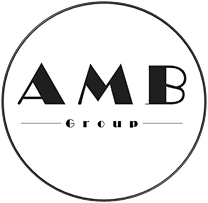It seems like everywhere you go now you see more and more ads by chiropractors offering shockwave therapy. What exactly is it and why is it becoming so popular?
The essential principle behind shockwave therapy (or ESWT) revolves around the action of shockwaves, which are rapid but short duration acoustic waves that carry energy and can propagate through tissues. Acting as a mechanical stimulus, ESWT promotes healing via mechanotransduction, and the biological responses include tissue regeneration, wound healing, angio- genesis and bone remodeling in addition to alleviat ing pain by means of hyperstimulation analgesia. The mechanotransduction created by ESWT triggers angi ogenic and tissue regeneration responses at cellular and molecular levels, generating beneficial the rapeutic effects including increased oxygen and blood circula tion, recruitment of stem cells, collagen, substance P, and an increase in VEGF. Common indications show ing promising results with ESWT include the treat ment of various musculoskeletal disorders, including tendinitis, epicondylitis, plantar fasciitis, trocanteritis, golfer’s elbow, tennis elbow, frozen shoulder, patellar tendonitis, and many others.
The therapy itself isn’t new. In fact, the Europeans have been using shockwave therapy for over 30 years. The Canadians system for over 20 years. In the past 10 years it has started to become popular in the USA. Focused shockwave (or FSWT) devices were initially introduced into the hospital and orthopedic markets. FSWT devices are more precise (focused) in their appli- cation and penetrate upto 12cm in depth. Radial shock- wave (or RSWT) devices have since been introduced providing the same technological effects as FSWT, but penetrating up to 6cm in depth. This lesser depth provides less risk for practitioners while providing the same effective relief as FSWT, for a fraction of the cost. Other advantages of RSWT include their ability to treat directly over hardware (replacement joint, pins, etc.),as it is indicated to do so to help speed up the bond- ing process and for the removal of scar tissue buildup through osteoblastic activity.
For practitioners that do soft tissue work, RSWT
can provide the same effects in a fraction of the time, while assisting in the longevity of the practitioner by replacing the toll that soft tissue work can take on the practitioner. Typical treatments times for RSWT is 3-7 minutes per treatment with most indications calling for between 6-12 treatments. A major benefit of RSWT is that most patients feel some initial relief directly following a treatment, making it easy for patients to comply with the treatment plan, eager for their next visit. The units are easy to use for clinicians and staff, with most units having built-in, preset programs, with very few contraindications.
Amazing patient results, along with increased affordability have contributed to this recent growth and popularity of shockwave therapy. Although it is an uncovered service with most major medical insurances, it does have its own billable HCPCS code (0101T) that is reimbursable through most PIP and work comp insur- ances, at rates between $400-$600 per treatment.*
With high quality RSWT units now being offered for as low as $6,500, can you really afford to not have RSWT in your practice?











